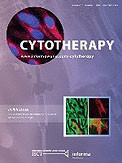Urdziková L, Likavčanová-Mašínová K, Vaněček V, Růžička J, Sedý J, Syková E, Jendelová P. Cytotherapy. 2011 Oct;13(9):1090–104. Epub 2011 May 4. IF: 2,925

Abstract
BACKGROUND AIMS: The effect of granulocyte-colony-stimulating factor (G-CSF) and/or the cytokine fms-like thyrosin kinase 3 (Flt3) ligand on functional outcome and tissue regeneration was studied in a rat model of spinal cord injury (SCI). METHODS: Rats with a balloon-induced compression lesion were injected with G-CSF and/or Flt3 ligand to mobilize bone marrow cells. Behavioral tests (Basso-Beattie-Bresnahan and plantar test), blood counts, morphometric evaluation of the white and gray matter, and histology were performed 5 weeks after SCI. RESULTS: The mobilization of bone marrow cells by G-CSF, Flt3 ligand and their combination improved the motor and sensory performance of rats with SCI, reduced glial scarring, increased axonal sprouting and spared white and gray matter in the lesion. The best results were obtained with a combination of G-CSF and Flt3. G-CSF alone or in combination with Flt3 ligand significantly increased the number of white blood cells, but not red blood cells or hemoglobin content, during and after the time-course of bone marrow stimulation. The combination of factors led to infiltration of the lesion by CD11b(+) cells. CONCLUSIONS: The observed improvement in behavioral and morphologic parameters and tissue regeneration in animals with SCI treated with a combination of both factors could be associated with a prolonged time-course of mobilization of bone marrow cells. The intravenous administration of G-CSF and/or Flt3 ligand represents a safe and effective treatment modality for SCI.
